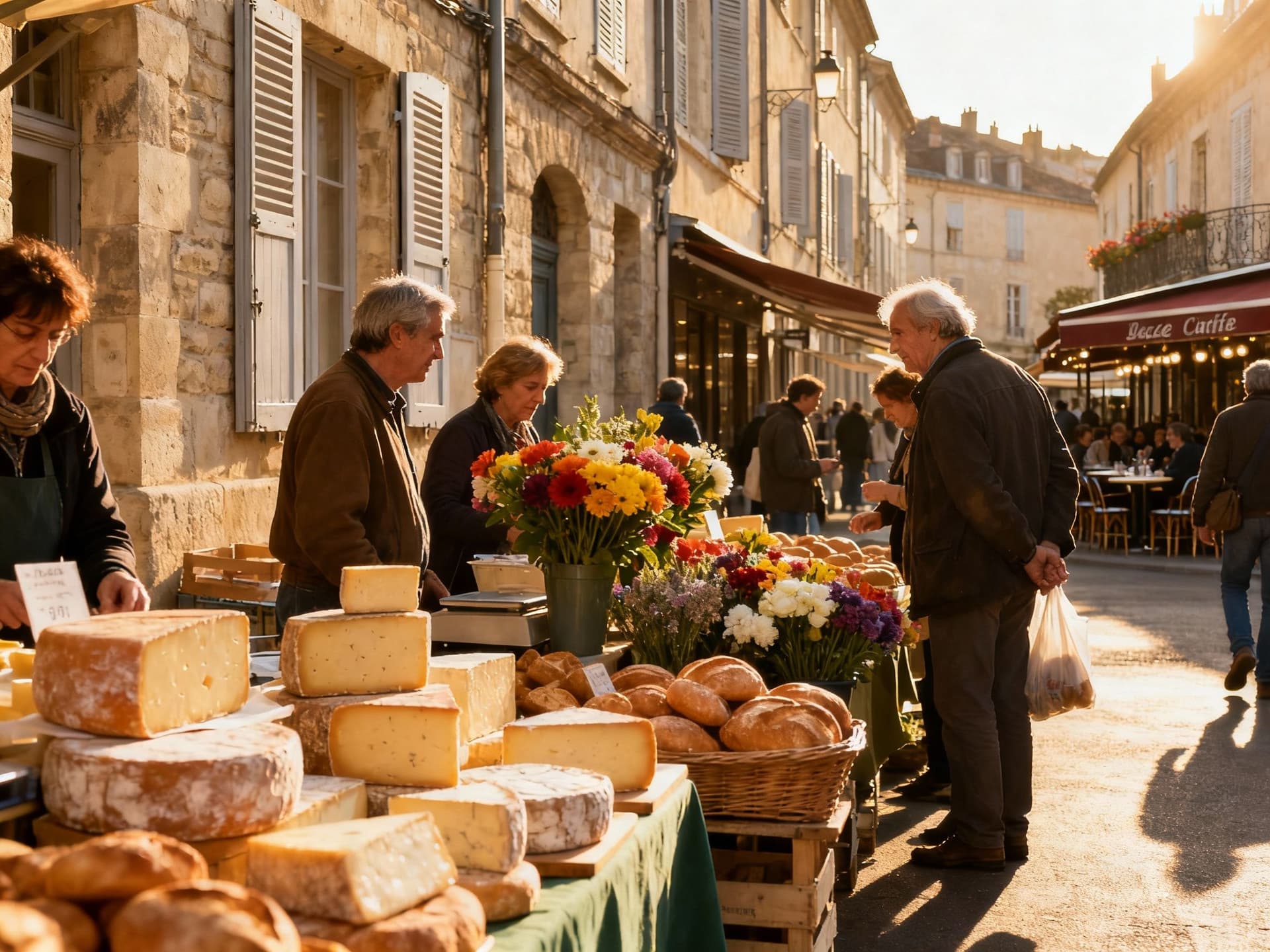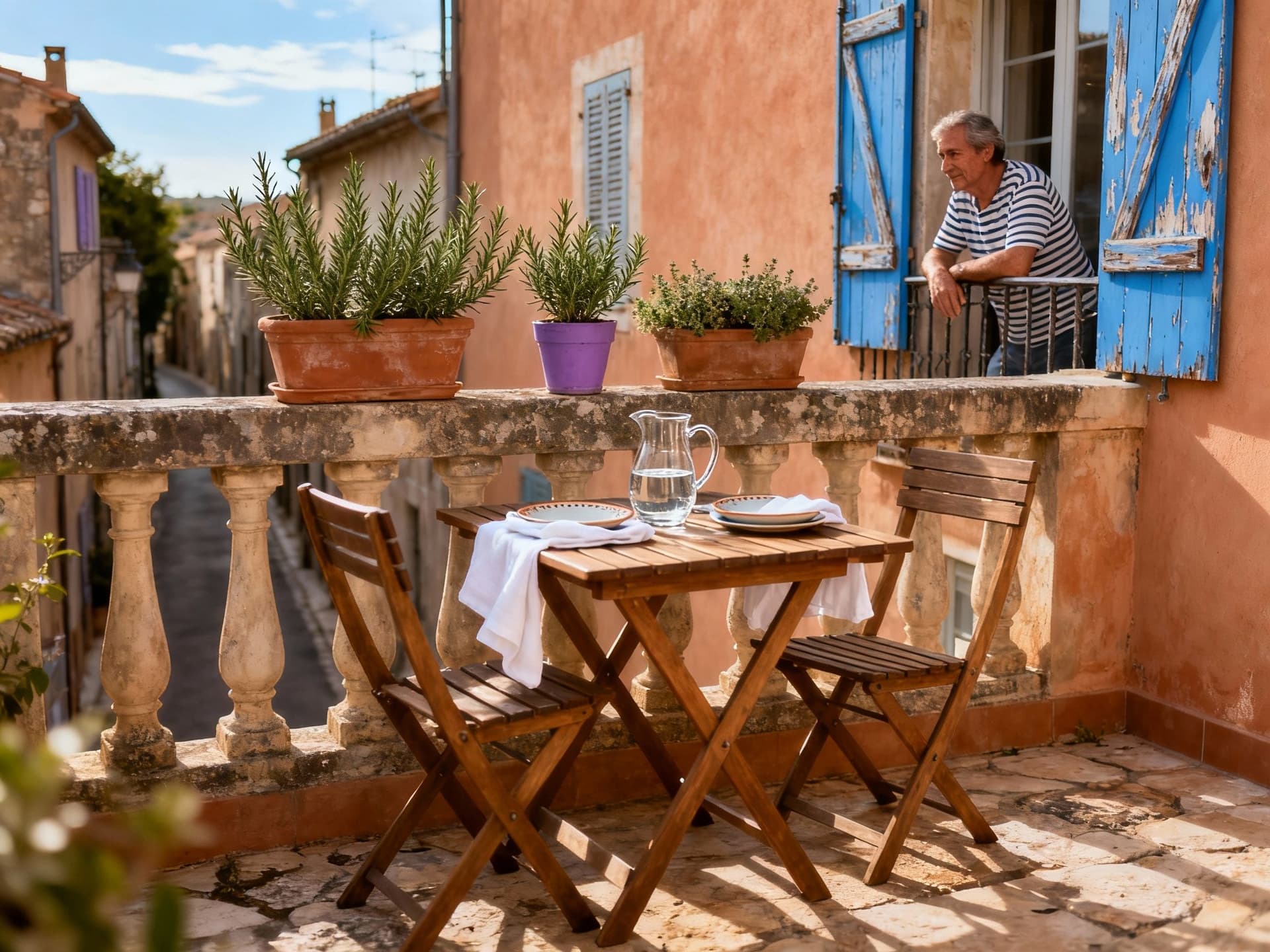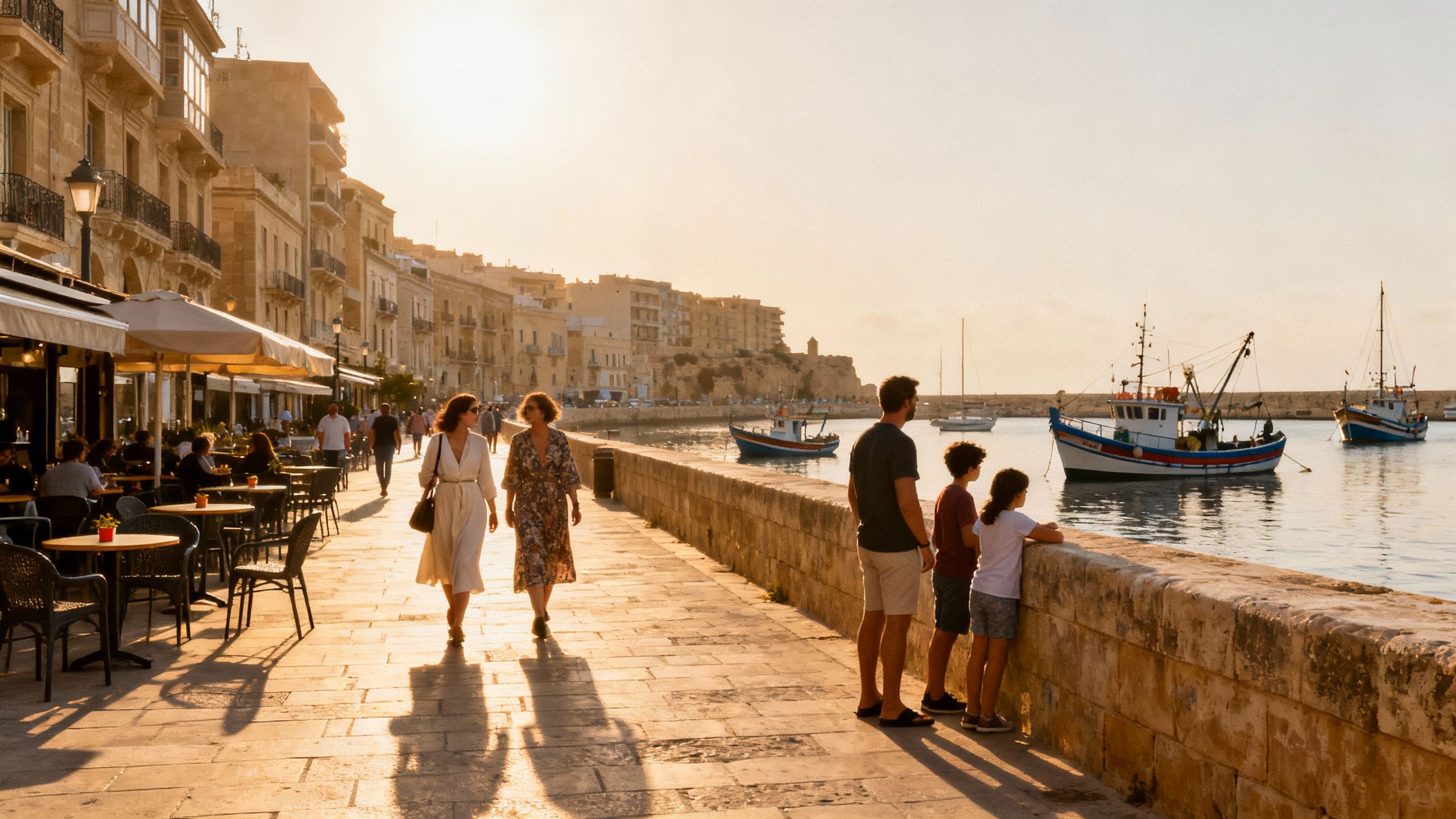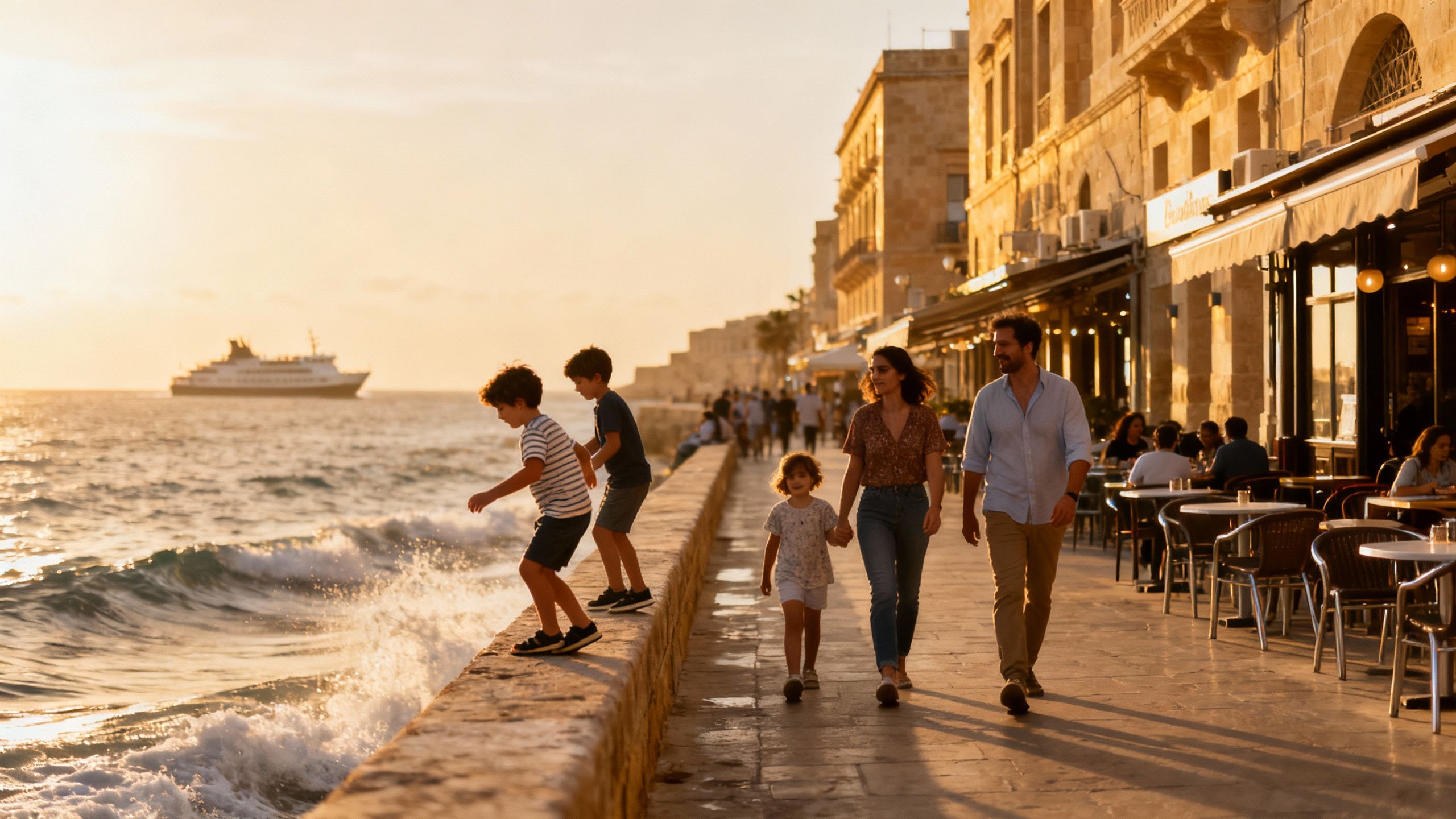The French neighbourhood buyers rarely consider — why it pays
A lifestyle‑first look at French neighbourhoods — from Le Panier’s alleys to Bordeaux’s quays — with data and practical steps to match daily life to property choices.
Imagine a late‑morning market in Aix, a barista pulling espresso on Rue de la Paix in Lyon, or a neighbour calling up from a third‑floor balcony in Le Panier. France is a choreography of small rituals — marché purchases, leisurely déjeuner, an evening promenade — and where you place yourself on that map shapes everything from commute to the sound of the street at dusk. For international buyers the choice is not merely city versus countryside but which daily life you wish to inherit.
Living the French life: texture before price

The rhythm of everyday life in France is place‑specific. In Marseille’s Le Panier, narrow alleys and craft workshops produce a village intensity; in Bordeaux’s Chartrons, wine merchants and antique dealers set a quieter cadence; in the suburbs of Paris, tree‑lined boulevards and weekly markets define family routines. These are not interchangeable scenes: each street teaches you how you will spend your mornings, whom you will see on Sundays and where you will take visitors.
Le Panier, Marseille — village in a port
Le Panier reads like a postcard: steep lanes, painted shutters and tiny squares where fishermen once traded. Gentrification has softened some edges — artisan shops and cafés sit beside traditional ateliers — but the neighbourhood retains an immediacy that larger, more 'polished' quarters often lack. For someone seeking a lived‑in, sensory neighbourhood, properties here bring immediacy: a kitchen window onto a lane, a small terrace for evening wine, and a front‑door life that happens outdoors.
Food, markets and weekday rituals
Markets are the social calendar. Mornings at Marché des Capucins in Bordeaux or the flower stalls on Cours Mirabeau in Aix shape daily routines. These rhythms influence practical decisions: proximity to a market often means smaller kitchens (you shop daily), while life near a tramline favours shorter commutes but noisier façades. As INSEE reported a gentle rebound in prices in Q1 2025, consider that value is increasingly tied to lifestyle accessibility rather than headline averages.
- Lifestyle highlights: local places that matter
- Le Panier (Marseille) — artisan ateliers, Place de Lenche, steep lanes
- Chartrons (Bordeaux) — weekend antiquaires, riverside promenades, wine bars
- Croix‑Rousse (Lyon) — hilltop views, textile heritage, village markets
Making the move: practical choices that preserve the life you want

Dreams meet contracts at the point of neighbourhood fit. A property with original timber beams in a converted presbytère will offer atmosphere but also obligations: restoration permissions, higher maintenance and subtler resale dynamics. Conversely, a well‑placed modern apartment near a tram stop pays dividends in rental appeal and daily convenience. Recent notary notes suggest the market’s modest recovery is uneven; location and type, not country‑level headlines, determine near‑term appreciation.
Property styles and how they shape life
Choose by lived function. A village house in Provence means terraced gardens, morning sun and longer drives for groceries; a Haussmannian flat suggests high ceilings, formal rooms and a lifestyle oriented around cafés and galleries. Consider circulation patterns (stairs versus elevator), thermal behaviour (stone walls that keep summer cool but require heating in winter) and the footprint of hospitality (terraces, courtyards or cellars for wine). These architectural truths determine everyday pleasure.
Local experts who keep life front and centre
Work with agencies that understand neighbourhood culture. A local agent in Marseille will know which lanes flood briefly in autumn, which owners conserve terraces, and which buildings have communal heating schemes. For international buyers, this cultural knowledge is as valuable as a good purchase price: it preserves the quality of life you sought when you fell in love with the street.
- Steps to align lifestyle with purchase 1. Visit at different times (market morning, weekday evening, a Sunday) to sense daily rhythms 2. Ask neighbours about deliveries, local tradespeople and seasonal nuisances 3. Check building registers for planned works or co‑ownership charges 4. Engage a local architect or conservator for older properties to estimate restoration costs 5. Confirm transport and healthcare links if long‑term residency is intended
Insider knowledge: the small surprises that shape long‑term satisfaction
Expats often speak of three small shocks: the cadence of public life, the domestic scale of French apartments and the choreography of bureaucracy. Practically: Saturdays are for markets, not administrative business; many older flats are compact by international standards; and local procedures (copropriété meetings, permis de travaux) reward patience and local counsel. These are not impediments but cultural contours — the things that make life in France particular and, for many, deeply rewarding.
Cultural integration, language and neighbourhood belonging
Language opens doors. A few phrases learned before arrival — greetings, market bargaining niceties, references to local food — transform transactions into conversations. Join a local association, volunteer at a market stall or enroll in a cooking class: such practical steps anchor you and accelerate access to trusted craftspeople and service providers.
How life changes: five years on
After five years you will have traded first‑year novelty for rooted rituals: a favourite boulanger, a predictable Sunday table at the marché, neighbourly exchanges at the laundry. Financially, modest local improvements and careful stewardship — sympathetic restoration, selective modernisation — often add more to a property’s value than cosmetic overhauls. Think of your purchase as acquiring a neighbourhood persona as much as square metres.
- Red flags seasoned buyers watch for
- Unresolved copropriété (co‑ownership) debts — they transfer with the unit
- Inconsistent renovation work lacking permits — ask for plans and approvals
- Properties in transit zones (flood or development plans) that limit future use
- Practical checklist before offer 1. Commission a local diagnostic (lead, asbestos, termites, energy) and a structural review 2. Request minutes of the last three syndic meetings and recent charges 3. Verify preemption rights and local planning constraints with the mairie 4. Agree retained fixtures and boundaries in the compromis de vente
Conclusion: life first, market second. Let the neighbourhood you choose teach you what matters — morning light, the sound of church bells, a back‑street bakery — and then bring measured pragmatism to the purchase. Work with agents who can translate neighbourhood character into concrete checks and local introductions; invest in preservation rather than fashion; and allow the small, everyday pleasures of French life to guide what you buy. When those align, the property becomes less an asset than a place worth returning to.
Former Copenhagen architect who relocated to Provence, offering relocation services, market analysis, and a curator’s eye for authentic regional design.


